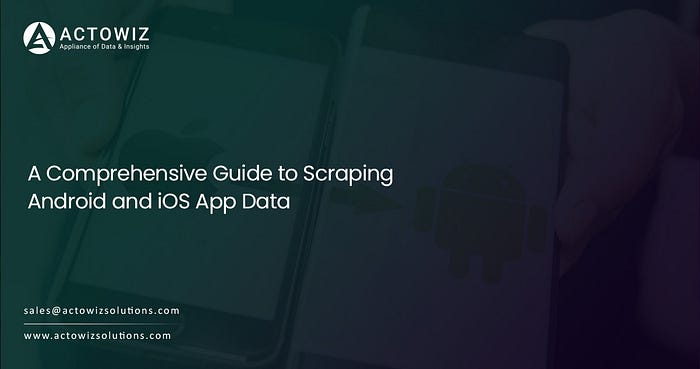A Comprehensive Guide to Scraping Android and iOS App Data

In today’s data-driven world, gathering valuable insights from mobile applications is crucial for businesses, developers, and researchers alike. Android and iOS apps store a wealth of information about user behavior, preferences, and market trends. However, extracting data from these apps, commonly known as “scraping,” requires careful consideration of ethical and legal boundaries. In this article, we will explore the techniques used to scrape Android and iOS app data while emphasizing the importance of ethical data acquisition.
I. Understanding App Scraping:
App scraping involves extracting data from mobile applications to analyze and interpret user interactions, ratings, reviews, and other relevant information. The data can help app developers enhance user experience, marketing teams understand customer preferences, and researchers gain insights into user behavior patterns.
II. Scrape Android App Data:
a. Reverse Engineering: Reverse engineering Android apps can reveal valuable insights about their internal structures and data. Tools like APKTool and JADX help decompile APK files, making it easier to analyze the app’s code and data storage methods.
b. Network Traffic Analysis: Monitoring the network traffic generated by an Android app can provide access to valuable data transmitted to and from the app’s servers. Tools like Wireshark or Charles Proxy can be employed to intercept and analyze the HTTP requests and responses.
c. Automated Testing Frameworks: Using automated testing frameworks like Appium or Espresso, developers can interact with the app programmatically and scrape data from android app user interfaces. This method can be particularly useful for gathering user-specific data and app behavior.
III. Scrape iOS App Data:
a. Static Analysis: For iOS apps, static analysis involves examining the binary code and metadata present in the app bundle. Tools like Hopper Disassembler and class-dump can help extract class information, methods, and data structures from the iOS app.
b. Apple Developer Tools: Apple provides Xcode Instruments, which includes the Network Monitor tool, helping developers inspect network traffic generated by iOS apps. Additionally, iOS developers can use Apple’s App Store Connect API to access basic app information programmatically.
IV. Ethical Considerations in App Scraping:
a. Respect Developer Terms of Service: App scraping must comply with the terms of service set by app developers and app store platforms. Developers should review the terms and conditions and seek permission if required before engaging in any scraping activities.
b. Protect User Privacy: App scraping should not compromise user privacy and data security. Personal information should be anonymized and handled with the utmost care to avoid potential legal issues.
c. Monitor Rate Limiting: App scraping processes should be designed to adhere to rate limits and avoid putting undue strain on the app’s servers. Responsible scraping involves being respectful of the app’s resources.
d. Avoid Repurposing Data for Malicious Intent: The scraped data should be used for legitimate purposes and not repurposed for any malicious activities, such as spamming or fraud.
Conclusion:
Scraping Android and iOS app data can be a powerful tool for gaining insights and improving app development and marketing strategies. However, it is essential to approach app scraping with ethical considerations in mind, respecting the rights of developers and users. By employing responsible scraping techniques, developers, businesses, and researchers can harness the potential of mobile app data while maintaining the trust of app users and the broader community.


Comments
Post a Comment